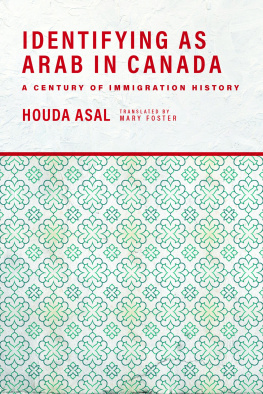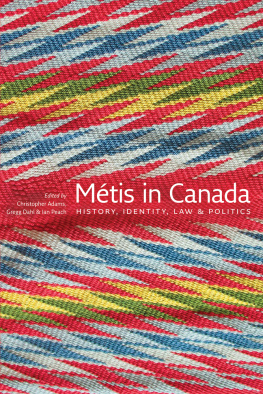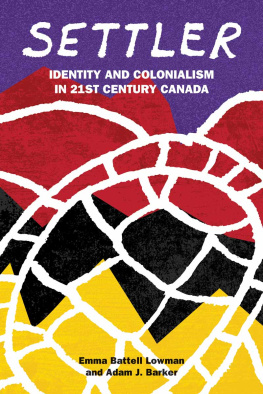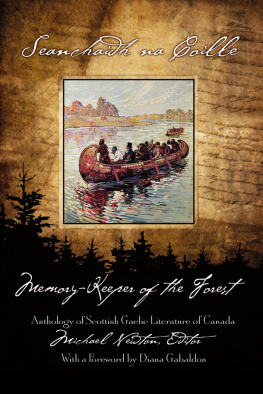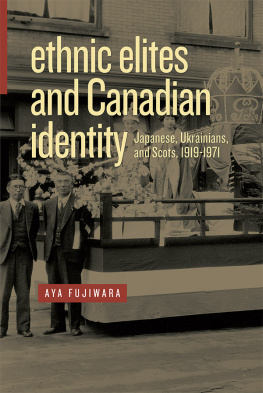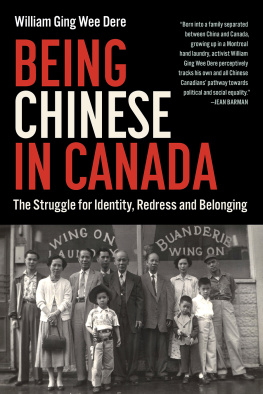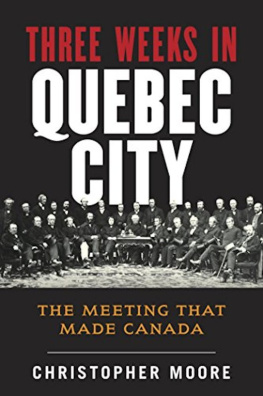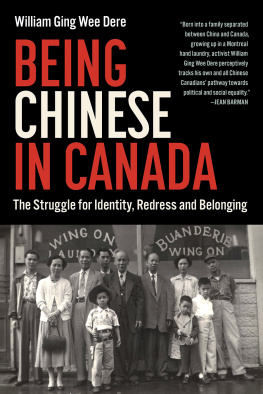Copyright 2020 Houda Asal
All rights reserved. No part of this book may be reproduced or transmitted in any form by any means without permission in writing from the publisher, except by a reviewer, who may quote brief passages in a review.
Originally published in French by University of Montreal Press under the title Se dire arabe au Canada
This book has been published with the help of a grant from the Federation for the Humanities and Social Sciences, through the Awards to Scholarly Publications Program, using funds provided by the Social Sciences and Humanities Research Council of Canada.
Editing: Valerie Mansour
Translator: Mary Foster
Cover design: Jess Koroscil
Printed and bound in Canada
Published by Fernwood Publishing
32 Oceanvista Lane, Black Point, Nova Scotia, B0J 1B0
and 748 Broadway Avenue, Winnipeg, Manitoba, R3G 0X3
www.fernwoodpublishing.ca
Fernwood Publishing Company Limited gratefully acknowledges the financial support of the Government of Canada, the Canada Council for the Arts, the Manitoba Department of Culture, Heritage and Tourism under the Manitoba Publishers Marketing Assistance Program and the Province of Manitoba, through the Book Publishing Tax Credit, for our publishing program. We are pleased to work in partnership with the Province of Nova Scotia to develop and promote our creative industries for the benefit of all Nova Scotians.
Library and Archives Canada Cataloguing in Publication
Title: Identifying as Arab in Canada: a century of immigration history / by Houda Asal; translated by Mary Foster.
Other titles: Se dire arabe au Canada. English
Names: Asal, Houda, 1979- author.
Description: Translation of: Se dire arabe au Canada. | Includes bibliographical references.
Identifiers: Canadiana (print) 20200198351 | Canadiana (ebook) 20200198424 | ISBN 9781773632452 (softcover) | ISBN 9781773632469 (EPUB) | ISBN 9781773632476 (Kindle)
Subjects: LCSH: ArabsCanadaHistory. | LCSH: ArabsCanadaSocial conditions. | CSH: Arab CanadiansHistory. | CSH: Arab CanadiansSocial conditions.
Classification: LCC FC106.A65 A8213 2020 | DDC 971/.004927dc23
Contents
To my grandfather, Amerkas orphan
To my aunt, who encouraged me to look across the sea
To my mother, who inspired me to do this research and so much else
To all Arab migrants and their children, to whom I wanted to give back a voice
To Turtle Island, the Palestine of Indigenous Peoples, offering me hospitality again and again, and where encounters took place which changed my life.
Acronyms
Pre-1950
cafl Canadian Arab Friendship League, 1944. Montreal (Muhammad Massoud).
cfsls Canadian Federation of Syrian Lebanese Societies, 1948. National (Joseph Helal, Elias Karam).
cwi Canadian Welfare Institute of Ottawa, around 1940. Ottawa (Elias Karam).
cylc Canadian Young Lebanese Club, 1933.
lla Lebanese Liberal Association, 1935.
lsca Lebanese Syrian Canadian Association, changed name to Syrian Canadian Association in 1968.
sca Syrian Canadian Association, 1933. Montreal.
Post-1950
aic Arab Information Centre, 1958. Ottawa.
apa Arab Palestine Association, 1966. Toronto (Khaled Mouammar).
aqp Association Qubec Palestine, 1972. Montreal (Rezeq Faraj, Michel Chartrand).
caf Canadian Arab Federation (Fdration canado-arabe fca ), 1967. National. Splinter, caf branch in London, 19701974. Became national again in 1974.
cafs Canadian-Arab Friendship Society, 1962. Toronto (James Peters, Habeeb Salloum).
cfme Canadian Friends of the Middle East, 1960. London, Ontario (Issa Fahel ).
cqp Comit Qubec Palestine (Universit Laval), 1969, Qubec (Marie-Claude Tadros Gigure).
facs Federation of Arab Canadian Societies, 19701974. Splinter, based in Toronto, but with national reach.
wlcu World Lebanese Cultural Union (Union libanaise culturelle mondiale), 1963. Initiative of the Lebanese government.
Introduction
I am a tribe which has always been nomadic in a desert the size of the world. Our countries are oases we leave when the spring dries up, our houses are tents dressed in stone, our nationalities a matter of dates and boats.
Amin Malouf, Origines , 2004
E veryone from the Mashreq, the historical region of Syria or Mount Lebanon, has a migration story to tell: a parent in North America, South America, Australia. A great number of emigrants left this region for other parts of the world at the end of the 19th century, generation after generation. This chain has never really been broken to this day. The Arab population of Canada is born of this history, these superimposed strata of immigration, generations who encountered each other and sometimes united to preserve their heritage, support each other or defend themselves against discrimination. In Canada, this history is little known. Covering the beginning of migration from the Arab world at the end of the 19th century to the end of the 1970s, this study attempts to recover the voices of those who chose to make themselves heard, to organize and create a public, collective existence.
While Arabs now attract considerable attention from media, the state and sociological studies there is little historiography on the different migratory trends from the region, the institutions the migrants and their offspring built, their expressions of identity and their political organizations. Moreover, there is very little known about the discrimination they faced and their capacity for mobilization over the past century. When they arrived in Canada, how were these migrants welcomed, perceived and treated? What did they choose to call themselves, how to organize and make themselves heard? These questions, summarized by the title Identifying as Arab in Canada , are all the more important because they continue to arise today: in Canada, who is designated Arab and who identifies as Arab ?
The Arab Minority in Public Space: To Exist Is to Exist Politically
On their arrival in Canada at the turn of the century, like many other migrants, people from the Mashreq were assigned to categories that relegated them to a subordinate position. At that time, and over the following decades, Canada established a racial hierarchy to classify groups: Indigenous Peoples were the first victims of the colonization of the land; Black people (including some who had been forced into slavery), Asians and Southern and Eastern Europeans were subject to discriminatory immigration policies more or less restrictive, depending on the period. These discriminations reflected racial hierarchies that shaped the way each group was treated and perceived, giving rise to different forms of protest according to the period and the group targeted. These categories, deployed by the Canadian state to select, classify and count migrants all-encompassing and discriminatory were often in contradiction with the way that migrants perceived themselves. Moreover, even within the categories, some groups found themselves in sub-classifications they rejected, such as the Asiatic race, viewed as particularly unwanted, in the case of migrants from the Mashreq. In 1967, selection criteria for migration based on ethnic origins ended, but other forms of discrimination and attributions maintained the Arab population in the status of racialized minority.
At a time when minorities who have been discriminated against and harmed by Canadian policies are demanding reparations and apologies, it is interesting to document the history of minorities in an intermediate position, an expression that describes the place occupied by Canadian Arabs. Compared to the dominant Anglo-Saxon, white majority and to other larger minorities targeted by even greater stigmatization, the Arab majority found itself in-between. This position explains in part why the group has drawn relatively little attention from researchers, who have generally been more interested in populations of greater importance to the Canadian state, such as Chinese, Indians, Ukrainians, Italians and Jews. Work on racism (e.g., Guillaumin, 1972), and more recently on the construction of the majority category of white (whiteness studies), is essential to understanding the conditions of the production of racialized minorities vis--vis the white majority, whose boundaries have evolved over time. These racial categorizations have a performative impact on the historical construction of social groups, and are even more complex in colonial nations which now claim to be multicultural, such as Canada (Iacovetta, 1997; Hage, 1998; Bannerji, 2000; Smith, 2006; Das Gupta et al., 2007; Thobani, 2007). This study shows how, at different moments in history, Arab organizations were able to refuse certain attributions and mobilize. Placed in an intermediate position, the Arab minority at times tried to circumvent racial categorizations (trying to become white, approach the majority category) and at times resisted these categories more directly, denouncing the racism targeting them. In each of these configurations, collective action by organizations created by the Arab group arose from a desire for public existence, for obtaining their rights or defending their interests, revealing the process by which a group goes from being a passive collection of individuals to an active participant in public life (Tilly, 1978: 69). The history of political action by Arab associations adds nuance to the idea that this population has always quietly accepted its lot, especially since the memory of past struggles remains relatively absent from the discourse of the contemporary Arab community, which often seems unaware of its own history.
Next page
